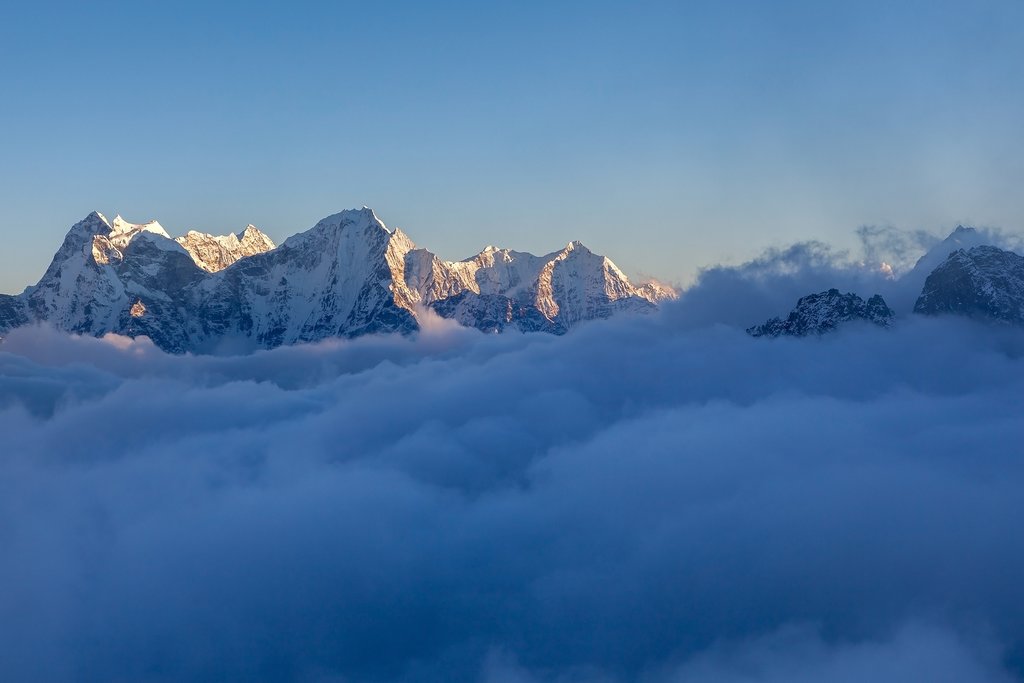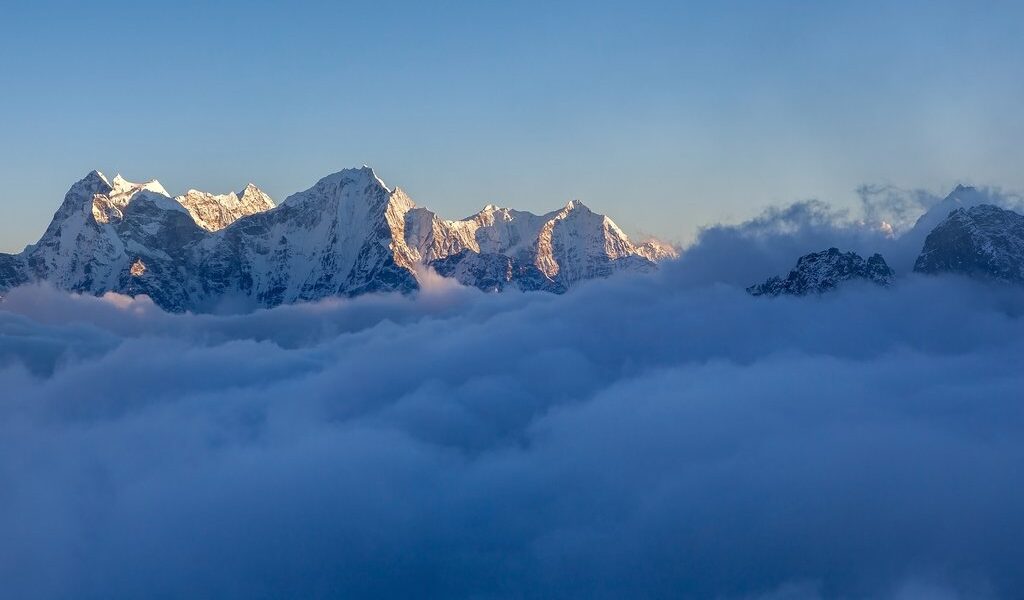
If you’re planning to trek in the Himalayas, the Alps, the Andes — or anywhere above 2500m — it’s important to have a good understanding of altitude sickness, which poses a danger to everyone at these altitudes and can be fatal, in severe cases. The good news is that it’s easily managed with the right planning and preparation.
Crucial Information: Understanding Altitude Sickness
- Altitude sickness is also medically referred to as Acute Mountain Sickness (AMS). It’s essential to understand this terminology for clear communication.
- Altitude sickness can manifest at elevations above 2500 meters (approximately 8200 feet). Be aware of this threshold when planning your ascent in mountainous regions.
- It’s highly recommended to hire a seasoned guide who possesses a deep understanding of AMS and knows how to effectively manage its onset and progression. Their expertise can be life-saving.
- To facilitate proper acclimatization, avoid sleeping at altitudes more than 300 meters (approximately 1000 feet) higher than the altitude at which you slept the previous night. This gradual ascent is crucial.
- Remember that everyone’s body adjusts to altitude at a different pace. It is imperative to pay close attention to your body’s signals and symptoms. Don’t push yourself beyond your limits.
- Ensure that your travel insurance policy provides comprehensive coverage for high-altitude rescue, including helicopter evacuation if necessary. Confirm the specifics of your policy before embarking on your trek.
- Never hesitate to turn around and descend if you experience symptoms of altitude sickness. Trying to push through can rapidly transform a manageable situation into a potentially life-threatening one. Your health and safety are paramount.
Delving Deeper: What is Altitude Sickness?
At high altitude, the atmospheric pressure decreases, resulting in a lower concentration of oxygen available for your body to absorb. Consequently, your heart and lungs must work significantly harder to deliver oxygen to your tissues, even when you are at rest. When you add the physical exertion of climbing a challenging mountain trail, your body is placed under immense strain. As you ascend to higher altitudes, this physiological effect becomes progressively more pronounced and severe. Your body requires adequate time to adjust to the decreasing oxygen levels; this adaptive process is known as ‘acclimatizing.’ If you ascend too rapidly, outpacing your body’s ability to acclimatize effectively, you will likely develop Acute Mountain Sickness (AMS). Failing to respond appropriately to AMS can have fatal consequences. It’s not merely discomfort; it’s a serious medical condition.
Consider the terrain you’ll be traversing. Is it rocky, steep, or icy? All of these factors contribute to the level of exertion. Understanding the challenges ahead allows you to better prepare and monitor your body’s response.
Chat with a local specialist who can help organize your trip.
Recognizing the Signs: Common Symptoms of AMS
It is crucial to remember that each individual responds to high altitude in a unique manner. While the majority of people typically don’t begin to experience noticeable effects until they reach an altitude of approximately 2500 meters, some individuals may start to feel the impact even at slightly lower elevations. Conversely, some individuals may acclimatize relatively quickly and be able to ascend at a faster pace, while others may struggle to acclimatize effectively at all. It is absolutely essential to prioritize listening to your body’s signals and sensations, rather than attempting to conform to the expectations of the group or adhere rigidly to the planned itinerary. Ignoring your body’s warnings can have severe consequences.
Early/Mild Symptoms: Recognizing the Initial Warning Signs
The hallmark symptom of mild AMS is typically a headache. This headache is often described as throbbing in nature and may be exacerbated by bending over or lying down. In addition to a headache, one or more of the following symptoms may also be present:
- A feeling of pronounced tiredness or weakness, often disproportionate to the level of physical exertion. This can manifest as a general lack of energy and difficulty performing even simple tasks.
- Dizziness or lightheadedness, often accompanied by a feeling of unsteadiness. This may be more pronounced when standing up quickly.
- Loss of appetite or nausea, ranging from a mild aversion to food to outright vomiting. This can significantly impact your energy levels and overall well-being.
- Insomnia, disturbed sleep patterns, frequent waking during the night, irregular breathing during sleep, and waking up with a gasping intake of breath. These sleep disturbances can leave you feeling exhausted and exacerbate other AMS symptoms.
It’s also important to note that these early symptoms can sometimes mimic the symptoms of dehydration, excessive exercise, or overexposure to the sun. To avoid masking the symptoms of AMS, it’s critical to maintain proper hydration, protect yourself from the sun’s harmful rays, and pace yourself appropriately during physical activity. Don’t assume it’s “just” dehydration.
If left untreated, mild AMS can progress to more severe forms of altitude sickness, such as cerebral edema (swelling of the brain) or pulmonary edema (fluid accumulation in the lungs). Both of these conditions are potentially fatal and require immediate medical attention. Therefore, it’s crucial to recognize and treat the early symptoms of AMS promptly. Before you embark on your high-altitude trek, take the time to thoroughly research and familiarize yourself with the symptoms of more serious AMS. Knowledge is your best defense.
Special Considerations: Children at High Altitude
When trekking at high altitude with children, it is essential to exercise extra caution and vigilance. Children are often less able to accurately recognize and effectively communicate the symptoms of AMS. For pre-school children (typically aged 3 to 5 years), it is generally recommended to avoid sleeping at altitudes higher than 3000 meters. It’s preferable to sleep below 2500 meters whenever possible. For children aged 8 years and older, it is generally assumed that altitude symptoms will manifest in a similar manner to adults; however, it’s important to remember that they may still struggle to articulate their symptoms clearly. Direct observation and careful questioning are key.
If any signs of illness or discomfort occur in your children while at altitude, it is always safest to assume that these symptoms are related to altitude sickness. In such cases, immediate descent is recommended, with the urgency of the descent depending on the severity of the symptoms. Err on the side of caution. For more in-depth information and guidance, consult resources specifically dedicated to trekking with Children at High Altitude.
Proactive Measures: How to Prevent AMS
The most effective way to prevent AMS is to ensure that your itinerary incorporates a safe rate of ascent, allowing sufficient time for your body to acclimatize to the decreasing oxygen levels. Furthermore, it’s essential to build in flexibility so that adjustments can be made to the itinerary if one or more members of the group experience difficulties with acclimatization. Don’t be afraid to deviate from the plan if necessary.
Expert Recommendations for Safe Ascent:
- When above 2500 meters, limit your sleeping altitude to no more than 300 meters (approximately 1000 feet) above the altitude at which you slept the previous night. Incorporate a rest day every third day of ascent, up to an altitude of 3500 meters (approximately 11,500 feet). These rest days allow your body to adapt.
- Once you are above 3500 meters, reduce your daily ascent even further. Only ascend up to 150 meters (approximately 500 feet) per day, and continue to incorporate a rest day every three days of ascent. Gradual is key.
Additional Preventative Measures to Minimize Risk:
- Maintain a steady and consistent pace while walking. Avoid bursts of intense activity and take regular breaks to allow your body to recover. ‘Plodding’ is often the best approach.
- Ensure that you drink enough fluids to keep your urine pale and plentiful. This may necessitate drinking 4-6 liters of fluids per day, including water, tea, soup, and other hydrating beverages. Staying well-hydrated is essential.
- Avoid sedative drugs, such as antihistamines and sleeping pills, as these medications can suppress respiration and increase the risk of developing AMS. Alcohol should also be avoided for the same reason. Be mindful of the medications you are taking.
- If you require any medication during your trek (for example, to manage an allergic reaction), be sure to discuss this with your guide and be aware of the potential increased risk of AMS. The guide can help you manage this risk effectively.
- Continuously remind yourself of the symptoms of AMS. Pay close attention to your body’s signals and remain vigilant in monitoring your fellow trekkers for any signs of altitude sickness. Teamwork is essential.
- Maintain open communication with your guide and diligently follow their advice. Severe AMS can impair your ability to understand what is happening to you. In some cases, the only safe option is to turn around and descend. Disregarding expert advice can jeopardize your life and the lives of others.
If you develop any symptoms of AMS, it is imperative that you speak up immediately. You need to seek assistance and adjust the itinerary to allow your body to acclimatize safely. Don’t suffer in silence.
Prioritizing Safety: Planning for a Safe Trek
Before embarking on your trek, consult with your doctor to discuss your plans for trekking at altitude. If you are currently taking any medications, be sure to inquire about potential interactions with altitude medications, such as Diamox, in case you need to take any. It is also essential to inform your trek operator about any medications you are taking. Full disclosure is crucial.
Furthermore, ensure that you choose an experienced trek operator and guide. Ask them the following questions to assess their expertise and commitment to safety:
- How does the itinerary specifically allow for proper acclimatization? Obtain a detailed explanation of the acclimatization strategy.
- What items are included in the first aid kit? Ensure that it contains medications and equipment appropriate for treating altitude sickness and other potential medical emergencies.
- What is the level of training and experience of the guide and the support team? Verify that they have extensive experience in high-altitude trekking and are certified in wilderness first aid or similar qualifications.
- What specific precautions do you take to prevent emergency situations from developing? Understand their preventative measures and risk management strategies.
- In the event that an emergency does develop, what is your detailed emergency response plan? Obtain a clear and concise description of their emergency protocols, including communication procedures and evacuation plans.
- How will the guide manage a situation in which an AMS patient is unwilling to turn around and descend? Understand their approach to handling difficult situations and ensuring the safety of all trekkers.
Remember, by understanding the risks, symptoms, and treatments associated with altitude sickness, you can plan for a safe and enjoyable trek that will be a truly unforgettable experience! Preparation is key to success.
Don’t hesitate to ask any of the KimKim high altitude trek specialists about how to plan a safe high altitude trek. We are passionate about incredible journeys that do not compromise safety. Your well-being is our top priority.
B-1783

